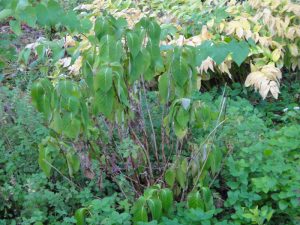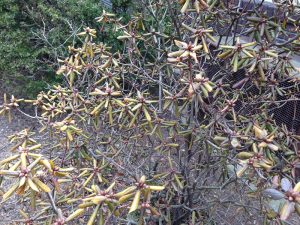Dry summers are not that unusual in the Midwest. But this year the dry spell followed an unusually wet spring and early summer in many areas. Of particular concern this year is that the dry spell is lasting well into autumn, putting plants in poor condition to get through the winter when water will be unavailable due to frozen soil.
Newly planted trees, shrubs and perennial flowers will be at most risk of winter injury from desiccation. Established plants may tolerate drought better, but they will be more susceptible to winter injury if they go into winter in stressed condition.
Woody plants, especially evergreens, are susceptible to drying out over winter, broad-leaved evergreens even more so. The aboveground parts such as twigs and evergreen leaves are very much alive through the winter and are continuously losing water through a process called transpiration. Once the ground is frozen, the plant’s roots are not able to take up water to replace that which is lost through the tops. The result is drying leaves, buds and twigs. Sunny, windy conditions cause water to be lost from the tops more rapidly, further aggravating the situation. Broad-leaved evergreens are particularly vulnerable, since they have a greater leaf surface from which to lose water. Making sure the plants have a sufficient supply of soil moisture before the ground freezes will help create healthier specimens to fight the winter battle.
Keep in mind that next year’s growth was determined by buds that formed in late summer and early fall when much of the state has been under extended dry conditions. Flower buds for many spring flowering and fruiting plants also developed during that time. So even if your plants aren’t showing any symptoms now, the damage may become apparent next season.
In dry fall seasons it is important to water thoroughly every 7-10 days. Watering of landscape and fruit plants should be aimed at where the roots naturally occur. While these woody plants do have some roots that grow very deep, most of the feeder roots responsible for the bulk of water uptake occur in the top 12-18 inches of soil. Most of these feeder roots are concentrated below the dripline of the plant and beyond, not up close to the trunk. Allow water to thoroughly soak the target area by applying water at a slow enough rate to allow penetration, rather than wasting water by runoff. Use mulch wherever possible to conserve what moisture there is.

